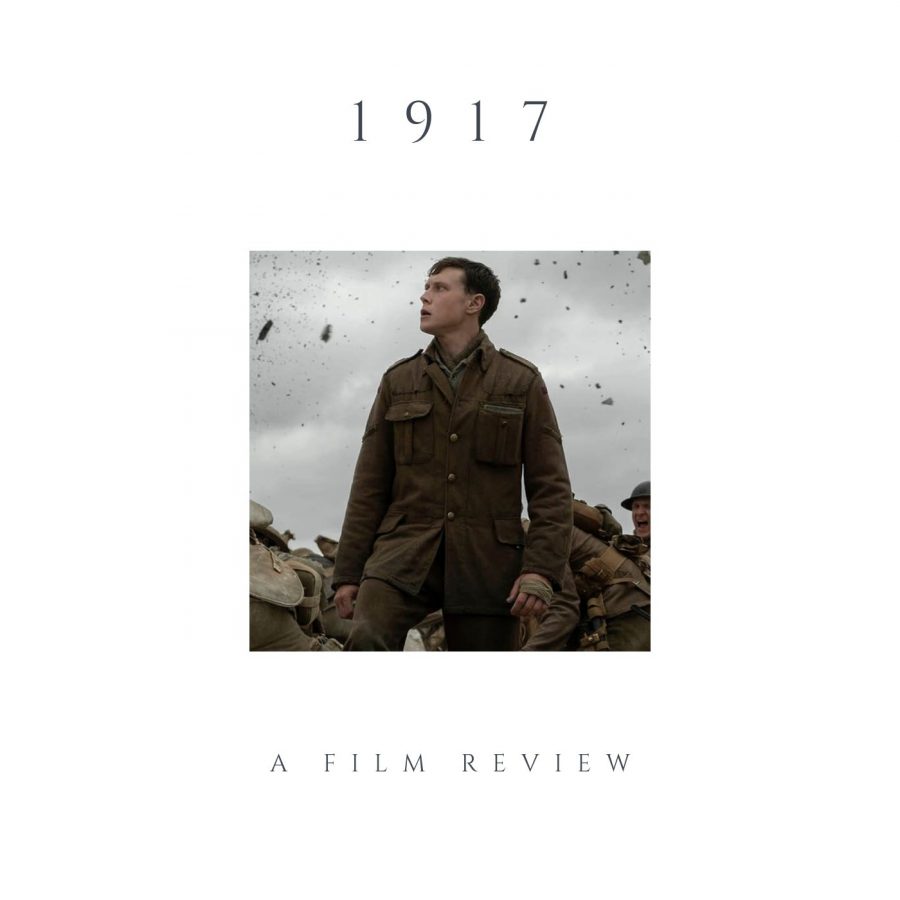1917: A One-Shot Wonder
“1917” is a well-executed one-shot film that captures its audience’s attention with an immersive undertone.
Jan 27, 2020
Director: Sam Mendes
Starring: Dean-Charles Chapman (Lance Corporal Blake), George MacKay (Lance Corporal Schofield)
Release Date: December 4, 2019
MPAA Rating: R
Our Rating: A
Set during World War I, “1917” follows two English soldiers on their quest to deliver a message from their captain that consists of a warning that their fellow regiment is walking into a trap set up by their German enemies. With time being crucial, if they make it to their destination after the regiment moves forward with the attack, there would be a massacre.
“I think the movie was really interesting and it makes sense that the director said he wanted it to be one-shot to make more immersive, it helped the movie play out a lot smoother,” freshman Angie Iraheata said.
Throughout the entirety of the film, a one-shot camera style was obtained. With one-shots being so difficult to shoot, it seems easier to simply film with an alternative method, but when asked in an IMDB interview, director Sam Mendes stated that the purpose for his filming style was to create an “immersive” environment for the viewer.
One-shots are especially demanding when shooting battles due to the fact that if a mistake is made mid-attack, crew would be forced to clean up the set and start from scratch. A clever work-around Mendes used was cutting scenes during pan outs, lower lit scenes and when the camera passed behind objects. Acknowledgment of this one-shot style is crucial considering the risks involved and the flow it creates for the film.

Personally, I think the movie exceeded my expectations and went beyond any other war movie I have seen before
— freshman Zarah Correa
Due to how fast the film jumps into action, the audience receives minimal background information on the two main soldiers in the movie, creating a lack of sympathy for them. Mendes managed to somewhat save this by placing one of the soldier’s brother in the regiment walking into the attack. This not only creates more suspense, but makes the audience root for the protagonist, allowing them to be more involved in the film. Although the minimal information on the protagonists did not faze most, it created a feeling of unsettlement to some viewers, which is understandable seeing as such a lack of exposition could lead to being unconcerned for their safety or misunderstandings to future references to their life back home.
While Mendes did add in three or four moments in the film where the two protagonists would mention their families, it is something that is not focused on and created confusion above anything else. Seeing as mentions to their personal lives are squeezed in between action, it will most likely be looked over by people. Although it is comprehensible that people may lack connection to the characters during the film, if a close eye was kept on the exposition, further details on their lives would come up, creating a backstory for each protagonist.
It is prominent exactly how much effort was put into the film when considering all the factors that went into pursuing the one-shot style. Although there were some faults in its exposition, decisions like that could easily be overlooked by audience members. With such a pristine film, it is difficult for it to go unnoticed seeing as it has been nominated for 10 Oscars. The film is a must watch and is definitely worth your full, undivided attention.






















